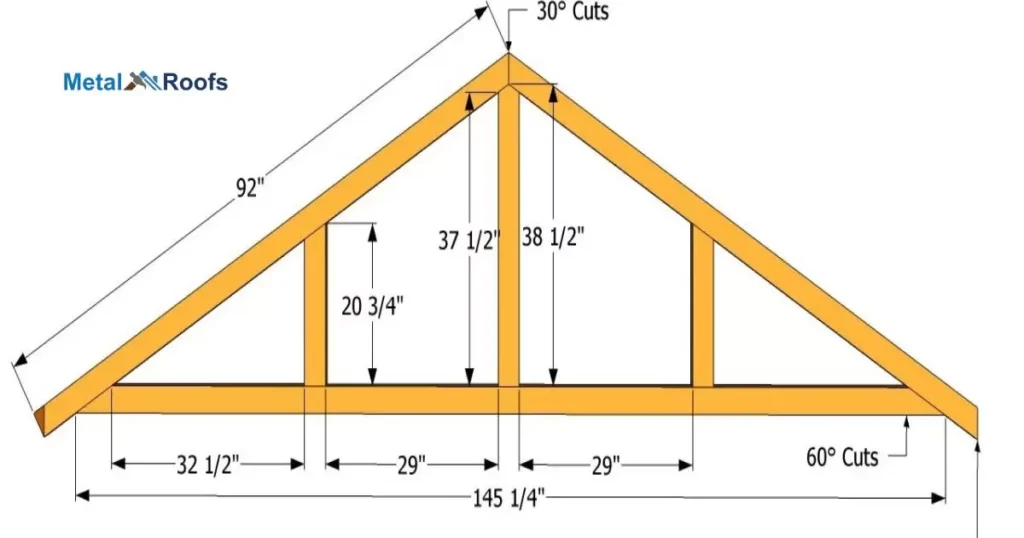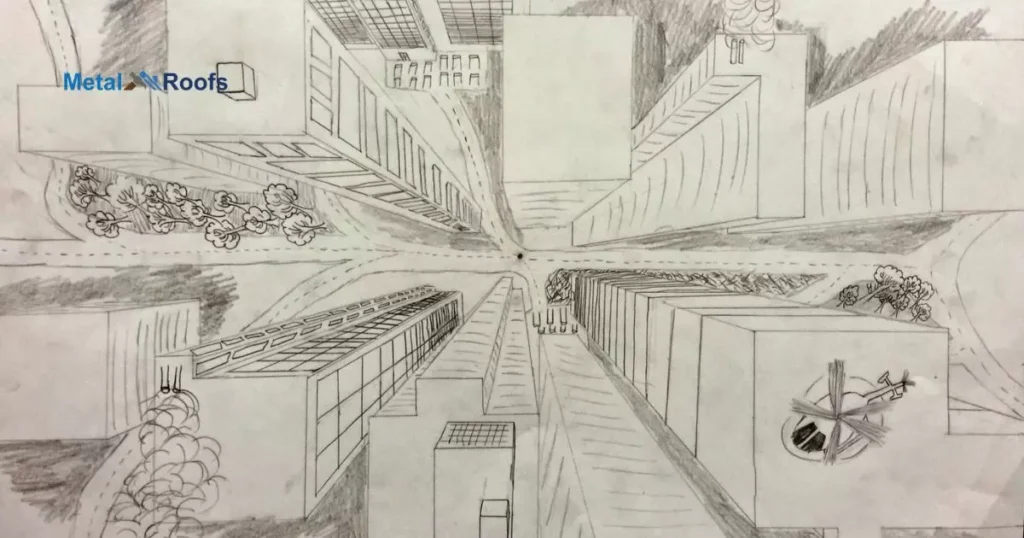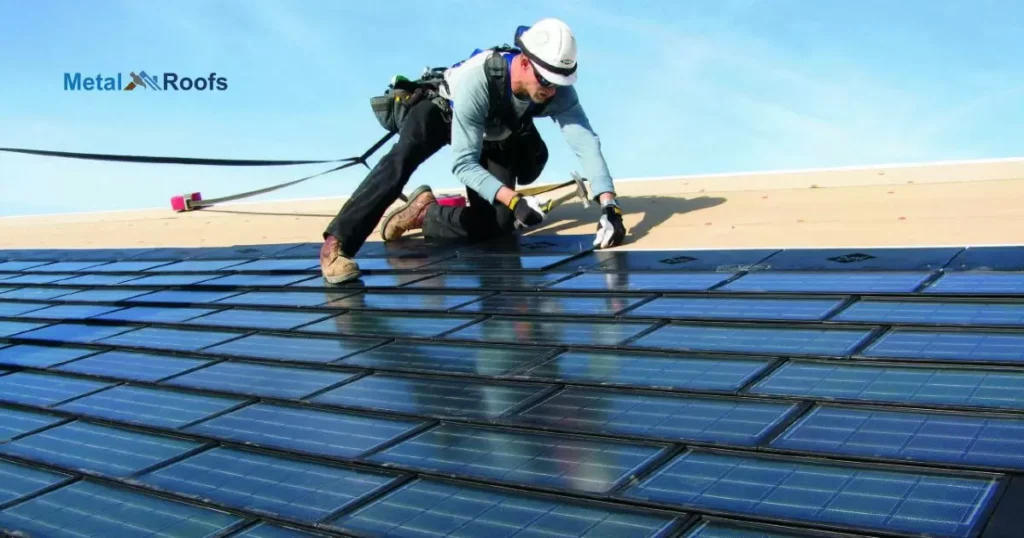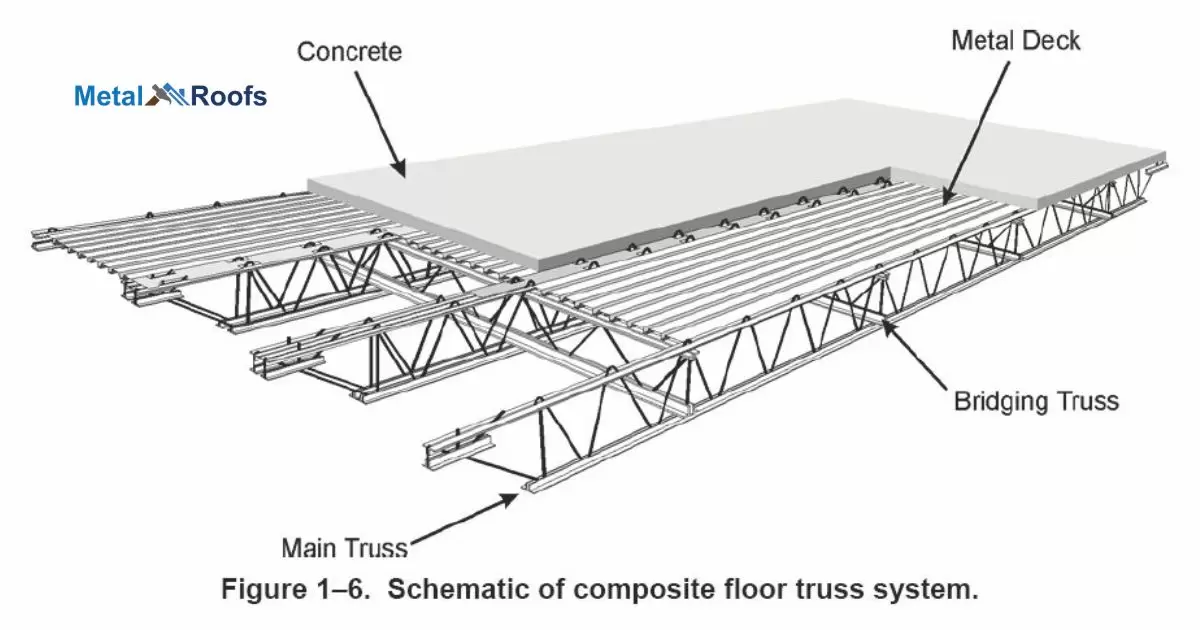Measure the roof’s dimensions accurately. Calculate the metal panel size and quantity needed. Account for overlap and trim. Order enough metal roofing materials. Ensure proper installation tools. Follow the manufacturer’s guidelines. Secure the metal panels tightly.
How to measure for a metal roof? Precisely measure the dimensions. Determine the panel size needed. Order the right quantity of metal. Follow the installation guide closely. Protect and maintain the metal roof.
Measuring the roof is key. Precisely measure the size. Determine the panel dimensions. Order the right amount of metal. Follow the installation steps closely. Secure the panels tightly. Protect the metal roof. Maintain it well.
Key Takeaways
- Accurate measurements are crucial.
- Outline its shape and features.
- Length, width, slope, and overhangs.
- Break down sections for total area.
- Higher slopes may require more material.
- Plan for 5-10% extra.
- Seek guidance if unsure.
Understanding The Importance Of Accurate Measurements
Accurate measurements matter because they ensure you order the right amount of materials. Sketch your roof to start, outlining its shape and features. Measure carefully, from length to width, and factor in slope and overhangs. Break it down into sections to calculate the total area.
The pitch of your roof impacts material requirements; steeper slopes like those in gable roofs need more. Plan for waste with 5-10% extra for cuts and errors. Seek professional guidance for accuracy when unsure.
Gathering The Necessary Tools And Equipment
| Tools and Equipment | Description |
| Backpack | Used to carry all necessary items comfortably. |
| Map and Compass | Essential for navigation in unfamiliar areas. |
| Water Bottle | To stay hydrated during outdoor activities. |
| Snacks | Provides energy during long outings. |
| Weather-Appropriate Clothing | Ensures comfort and protection from elements. |
Gathering the necessary tools and equipment for measuring a metal roof is the first step in the process. You’ll need a measuring tape to accurately determine the dimensions of your roof sections. Make sure to have a pencil and paper handy for sketching out the roof layout as you measure.
Consider using a ladder or other climbing equipment to access hard-to-reach areas safely. Keep a calculator nearby to help with calculating the total roof area. Lastly, having someone to assist you can make the process smoother, especially when dealing with larger roofs.
Measuring The Roof’s Length And Width

To determine the length of your roof, simply take a tape measure, start at one end of the roof, and extend it straight across to the other end. Record the measurement in either feet or meters for accuracy.
Next, to find the width, position yourself at one side of the roof and measure straight across to the opposite side. Ensure the tape measure is level to get a precise measurement. Note down this width measurement along with the length.
Calculating The Roof’s Area
To calculate a roof’s area, start by sketching the roof’s shape and features. Measure the length and width of each section, including any overhangs. Break down the roof into smaller sections if it’s complex, and calculate the area of each. Add the areas together to find the total roof area.
Consider the roof’s slope when calculating the area. Measure the rise over the run to determine the pitch. Higher slopes may require more material. Finally, factor in a 5-10% waste allowance to accommodate for cutting and errors. If unsure about any step, consulting with a roofing professional can ensure accuracy.
Accounting For The Roof Pitch
When measuring for a metal roof, consider the roof pitch. The pitch is the angle or slope of the roof. Higher pitches mean steeper slopes and potentially more material needed. Measure the rise, the vertical distance, over the run, the horizontal distance, to determine the pitch.
This ratio guides your material calculations.Roof pitch affects the amount of material required for the project. Higher pitches typically demand more materials compared to lower ones. Ensure accurate measurements of both length and width, factoring in the pitch, to avoid underestimating material needs.
Adding For Waste And Overlap
When measuring for a metal roof, remember to add extra material for waste and overlap. Calculate around 5-10% more than your total area to accommodate cutting and mistakes. This ensures you have enough material to complete the project without running short.
Plan carefully to avoid delays and additional costs.Overlap is necessary for proper installation and weatherproofing. Metal roofing panels typically have overlapping edges that interlock. Measure the width of the overlap and adjust your calculations accordingly. This ensures a tight seal and prevents water leakage.
Sketching A Bird’s Eye View Of The Roof

When sketching a bird’s eye view of the roof, start by drawing its shape with simple lines. Include all sections and any features like chimneys or skylights. Use a pencil and paper to keep it flexible for adjustments. Ensure accuracy by measuring each section’s length and width.
Break down the roof into manageable parts for easier measurement. Consider the overhangs, those sections extending beyond the walls. Calculate the total area by adding up the individual sections. Pay attention to the roof’s slope, as steeper pitches may require more materials.
Measuring The Width Of The Roof
To measure the width of the roof, start at one end of the eave and extend a measuring tape to the opposite end. Make sure the tape is level to get an accurate measurement. Record the width in feet and inches. Repeat this process for each section of the roof to ensure accuracy.
Add the measurements together to get the total width of the roof. After measuring, divide the total width by 3 feet to determine the number of roofing squares needed for materials. For example, if the width is 24 feet, you will need 8 squares of roofing materials.
Determining The Length Of One Metal Panel
To determine the length of one metal panel, measure the distance from the eave to the ridge. Add the desired overhang at each end for a clean finish. This measurement will be the total length needed for one panel.
When measuring, be precise to avoid errors. Use a tape measure and note down the measurement carefully. Repeat the process for each panel needed, ensuring consistency.
Repeating The Process For The Other Side Of The Roof
Sure, when you finish measuring and planning for one side of the roof, you’ll need to do the same for the other side. This means drawing out its shape, measuring its length, width, and any parts that stick out.
Then, calculate how much roofing material you’ll need for that side too. Don’t forget to consider the slope and add a bit extra for waste. If you’re not sure about any of it, it’s a good idea to ask for help from someone who knows about roofing.
How To Measure Metal Roofing For Valleys?

To measure metal roofing for valleys, start by sketching the valley’s shape. Measure the length of the valley from top to bottom. Then, measure the width at the widest point. Calculate the area of the valley by multiplying its length by its width.
Ensure to include any overhangs in your measurements. Consider the pitch of the valley when determining the amount of roofing material needed. If unsure, seek guidance from a roofing professional to ensure accuracy.
Frequently Asked Questions
How Do You Calculate Metal Roofing Coverage?
Measure your roof’s length and width, then multiply to get the area. Account for slope and overhangs. Consult a professional if unsure.
What Is The Formula For Measuring A Roof?
Sketch the roof shape. Measure length and width. Calculate area for each section. Consider slope and overhangs. Consult professionals if unsure.
What Is The Standard Size Of A Metal Roof?
Metal roofs vary in size, with panels typically ranging from 8 to 20 feet in length. Accurate measurement is key to ensuring you get the right fit for your project.
Conclusion
Measure the roof size accurately. Get the right metal panels. Follow the installation guide. Secure the panels firmly. Protect the metal roof.
Maintaining the metal roof is crucial. Inspect it regularly for issues. Clean and seal any gaps. Prevent corrosion and damage. Enjoy the long-lasting metal roof.











